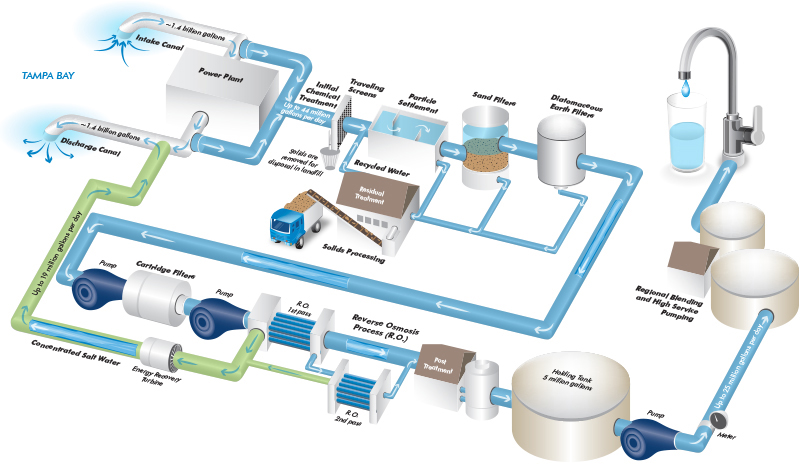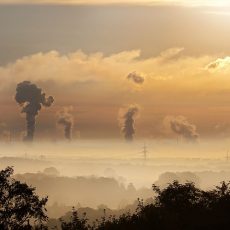
Today we are going to look at water. H2O. Specifically, what type of emissions are produced bringing this elixir of life into our lives.
Water is such a massive part of our planet. Well known facts: 71 percent of the earth’s surface is covered by water and 96.5 percent of that water is in our oceans. Of the surface freshwater, 87 percent is held in lakes, 11 percent in swamps and only 2 percent in rivers. So the distribution of drinkable water is not widespread. In 2017, 71% of the global population (5.3 billion people) had access to drinkable water. That is, located on premises, available when needed, and free from contamination.
In order to transport and treat water so that it is drinkable in your home requires varying degrees of energy depending on where you live, the season, and type of water source. For Americans, 2 to 4 percent of the total energy use in the US is for drinking and wastewater systems that emit over 45 million tons of greenhouse gases annually. The energy use for water on the West Coast is much higher with California using 19 percent of the total energy. This is due to a lack of natural water sources, a dependency on pumping long distances, and the use of desalination plants.
History tells us that early cities located themselves near available water sources. Mesopotamia, the cradle of civilization, was situated between the Tigris-Euphrates river system. Think of other cities that were founded centuries ago on rivers such as London and the Thames, Budapest and the Danube, Cairo and the Nile, Shanghai and the Huangpu, Berlin and the Spree; among others. It’s no coincidence they became important historical cities.
Surface water from lakes and rivers supply 64% of our fresh water with the rest from groundwater. The water is pumped to treatment plants to make it safe for drinking. To clean our freshwater, treatment plants use different processes such as coagulation and flocculation, sedimentation, filtration and disinfection
Desalination plants require an enormous amount of energy to create fresh drinking water. There are several different processes for either membrane based or thermal based methods. The traditional method of desalination, distillation (boiling and re-condensation of sea water), has made way for the reverse osmosis method that now leads installed capacity and yearly growth. Reverse osmosis uses the least amount of energy at 3 to 5.5 kWh/m3.

The average American uses around 100 gallons of water each day. That is twice what they use in Europe and 7.5 times the UN recommended minimum. All of that used water is sent to wastewater treatment plants and either put back into river systems or recycled for other purposes.
| Process | Energy(kWh / m3) | Daily lb of CO2e(per 100 gallons) |
| Conveyance | 0 to 1.8 | 0 to 1.1 |
| Treatment Plant | 0.6 to 2.1 | 0.35 to 1.3 |
| Desalination | 3 to 5.5 | 1.8 to 3.2 |
| Distribution | 0.18 to 0.31 | 0.11 to 0.19 |
So we’ve looked at the drinking and wastewater services supplied to the home. But what else in our lives requires water? In the past we’ve discussed the large amount of water that is used in Agriculture. Livestock and Crops need water to grow. Natural fabric such as cotton is grown from a plant and therefore requires water.
The amount of water used to grow different products varies greatly. The methods used will also influence the final total — think grass fed versus grain fed beef. But these numbers are only the average emissions from US agriculture. Remember that the CO2 from the Water Footprint is only a portion of the total Carbon Footprint.
| Product | Portion Size | Water Used (gallons) | Emissions from Water Use (lbs of CO2e) |
| Wine | 4 oz glass | 29 | 0.1 |
| Apple | Single | 33 | 0.12 |
| Coffee | Cup | 35 | 0.13 |
| Beer | Pint | 40 | 0.14 |
| Egg | Single | 52 | 0.19 |
| Rice | Cup | 132 | 0.47 |
| Bread Loaf | 16 oz | 192 | 0.69 |
| Chicken Breast | 6 oz | 195 | 0.7 |
| Hershey’s Chocolate Bar | 1.5 oz | 197 | 0.71 |
| Margherita Pizza | Whole | 332 | 1.2 |
| Cotton Shirt | Single | 660 | 2.4 |
| Pork loin | 1 lb | 720 | 2.6 |
| Beef | 8oz Steak | 930 | 3.4 |
| Leather Jacket | Single | 18k | 65 |
We should also note that there is water used in most manufacturing processes such as for the cooling or cleaning of machinery, or even used in the products themselves. We also have large volumes of water in Nuclear Power Plants.
So what can we do to help reduce the emissions caused by drinking and wastewater infrastructure?
At the source, utilities are looking to install renewable energy options to power the treatment or desalination plants. With further government regulations that focus on sustainability, we can ensure drinkable water of the future has minimal emissions.
Options for your homes include Septic tanks that reduce the energy required to remove wastewater or installed water tank and capturing systems that will cut down on water utilities infrastructure requirements to pump water to your home.
But the easiest option is always to use less. Take shorter showers (bathe with your significant other?) Ensure dish & clothes washing machines are full when using them. Switch water off when not using (think while brushing teeth, scrubbing a pot etc.) Capturing secondary water to use on your garden. And optimizing the toilet flush.
As our population increases, we need to learn how to adapt to sharing our limited freshwater resources. Water is essential for life and providing access that is more sustainable makes sense.



